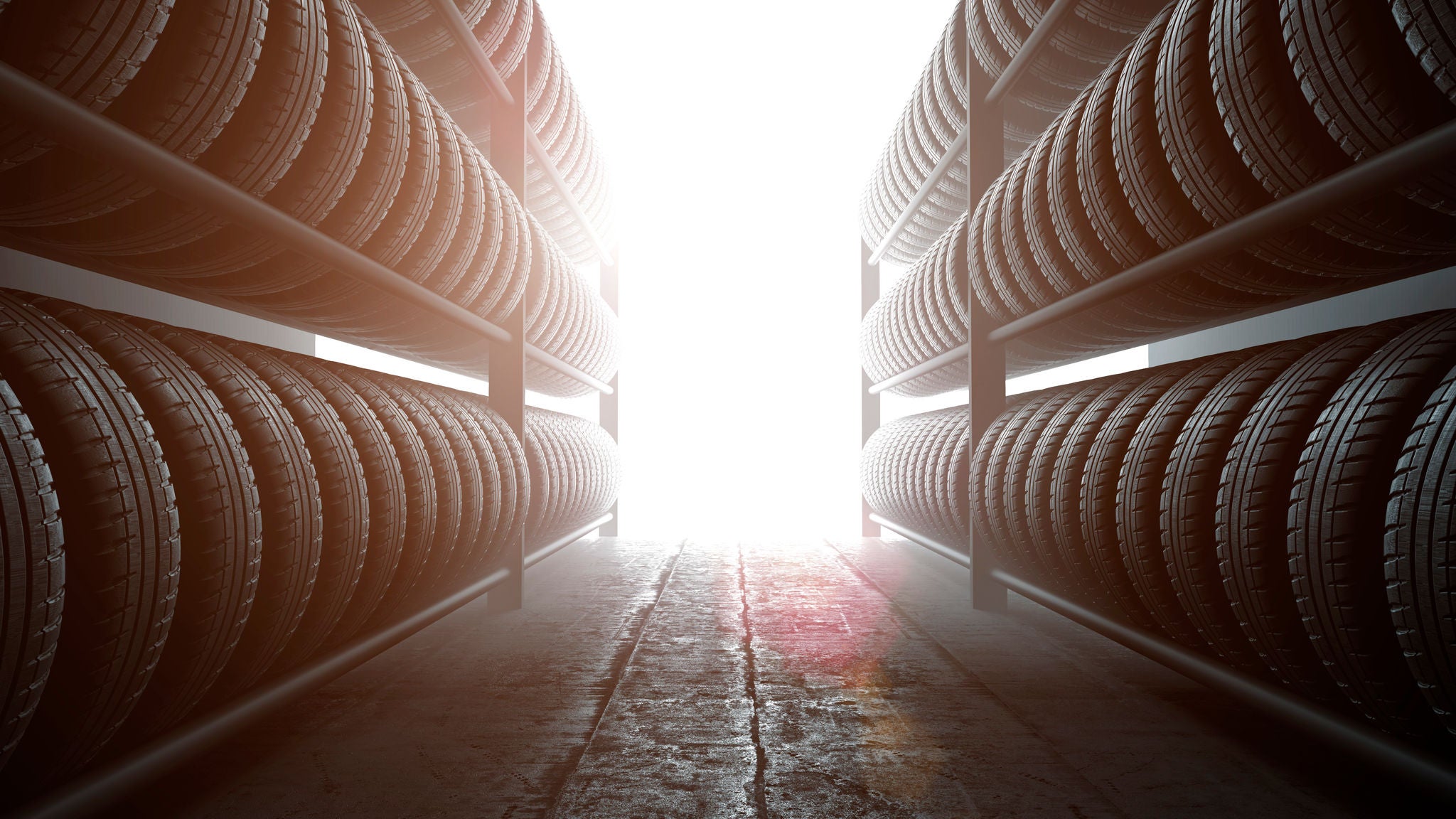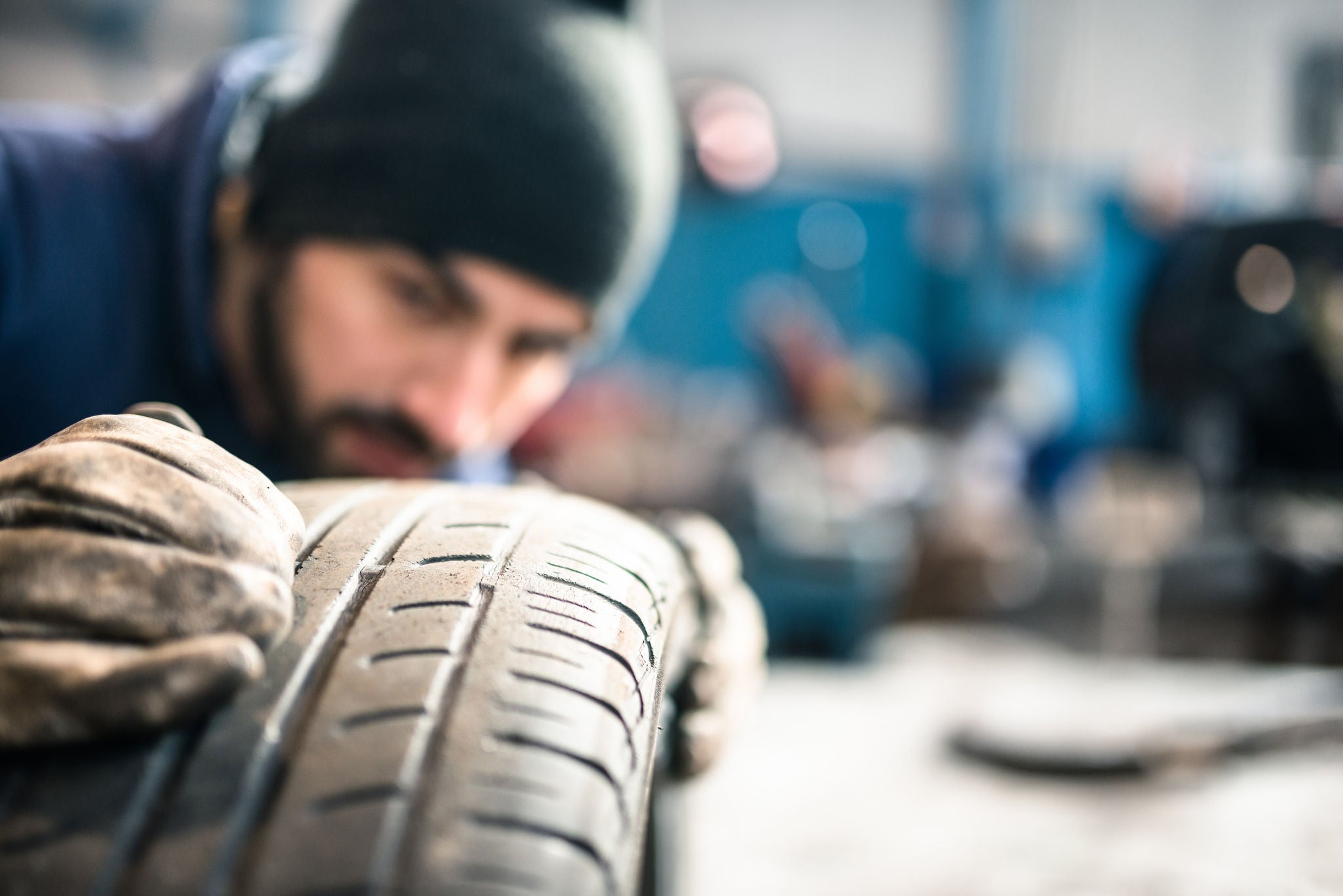When do tyres have to be replaced? This is a question many drivers ask themselves. Ultimately, the correct models play a major part in determining how safely and fuel-efficiently you travel. On the one hand, this is about the seasonal changeover: When should you replace your tyres in spring? Also, when do you replace summer tyres with winter tyres? On the other hand, fundamental aspects such as the wear and tear of tyres, tread depth and the age of the tyres are also reasons for new tyres.

Tyre wear limit: When are new tyres needed
Tyres have exceeded their wear limit if, for example, the tread depth has gone below a certain level. By then, that is certainly the time for new tyres. The legal minimum tread depth is 1.6 millimetres. Uniroyal recommends at least 3 millimetres for summer tyres and 4 millimetres for winter tyres.
Wear on car tyres is also accelerated when tyre pressure is too low. In this case: The tyre pressure should be too high instead of too low. It must be up to 0.3 bar above the recommended pressure. Low tyre pressure increases wear and tear. In addition: It results in higher petrol consumption of up to half a litre per 100 kilometres.
Uneven wear is another sign that new tyres are needed. This means that much of the tyre has sufficient tread depth – but other parts do not. The reasons for this may differ and can usually be established from the type of abrasion shown. If the wear is only visible on one edge of the tyre, then your tyres are not running parallel to the direction of travel. The cause may be incorrectly set tracking or a static or dynamic imbalance on the tyre. A common cause of an incorrect position is bumping the curb when parking. A wheel bearing with too much play or faulty shock absorbers can also lead to uneven wear and tear.
Take note of embedded foreign objects such as nails, which can also damage the inner structure of the tyre. You will also need to act if your tyres have irregularities. These include cracks due to puncturing or cutting, as well as bumps on the outer walls. They occur when driving over obstacles where impact takes place. This results in breakage of the wires which act as a stabiliser within the tyre.
Tips
- If the wear limit of the tyres is exceeded and you need new tyres, then make certain that the desired tyres are permitted for your car before purchase. Otherwise, you may lose the operating license for your vehicle. To ensure all is well, you can quickly compare the numbers on your old tyres to those on the new ones.
- When storing tyres, make sure that these are stored in a location with as stable a temperature as possible. They can be stored in a workshop if you want to save space at home. It is important to store tyres properly.
- Are your old tyres still within the wear limit and do you not need to buy new seasonal tyres yet? Use chalk or a sticky label to show the location where the tyres were mounted: front right or front left, or back right or back left. When mounting the tyres again, they can be switched crosswise.
Replacing tyres: How frequently?
Whether you drive often or not, there is always a need for new tyres: The time they become due depends on several factors. As well as wear and tear, age is one of the main reasons for needing new tyres. New tyres are still needed after a certain time even with ideal storage conditions and only light usage. But even if everything still appears to be in order: When should you replace your tyres?
We generally advise that tyres are replaced after ten years at the very most. Others go as far to say five or six years at most. Regarding the research: Tyres are no longer representative of the state of the art even after only a few years. The rubber compound hardens over time and the material starts to suffer from fatigue and becomes brittle. This also applies when, for example, the tread depth remains in line with specifications and the tyres appear to be in good condition. That can be an irritant to infrequent drivers. Even if only infrequently used, new tyres are still necessary after a few years to ensure safety on the roads. Drivers of electric vehicles may have to switch to new tyres earlier than expected. Tyres wear out faster as electric motors have greater torque than combustion engines.
If you are not certain how old your tyres are, then the DOT number on the side of the outer wall can help. This provides a reference regarding tyre age and when you have to replace them.
From summer to winter: When are tyres replaced?
The laws on winter tyre use in Europe are decided locally. Whilst there are countries with statutory requirements, there are also countries such as Germany which merely have a situational obligation to use winter tyres. This is where the problem lies: Anyone who causes an accident through the use of summer tyres during winter in these countries has to pay a substantial fine. Winter tyres are also at their most effective when the temperature is below seven degrees Celsius.
Drivers should take care to bear in mind when winter tyres are sensible and replace tyres accordingly – depending on the weather and also the region. The German “O to O” rule is a good reference point. Vehicles should be switched over to winter tyres in October, then at Easter – "Ostern" in German – switched back to summer tyres.
If you use the previous year’s tyres, then check that the wear limit on the winter tyres has not been exceeded. The same applies to the wear limit on summer tyres. The tyres only provide the desired degree of safety an the lowest possible fuel consumption under those conditions.

Replacing tyres: Other things to bear in mind
Many drivers leave it to the professionals when it comes to replacing tyres. If you decide to change tyres at home, it's worth taking a few things into account: It is advisable to obtain a hydraulic vehicle jack. The spare jack in the boot should only be used in emergencies. With the latter, there is a greater risk that the vehicle could fall off and be damaged as a result – or, worse still, injure the mechanic.
When replacing tyres, you should always change both tyres on one axle before moving on to the other. Those who don’t have so much experience may also ask: do the new tyres or the tyres in better condition go on the front or rear? Always mount the tyres with the better tread on the rear axle. The reason: The rear axle ensures tracking stability, regardless of whether the vehicle drive is at the front or back.
Check the wheel bolts every time the tyres are replaced, as wear also takes place there. After approximately 50 kilometres, tighten the bolts once again. This is particularly important if driving with aluminium rims. As this material is extremely lightweight, it yields to the pressure from the bolts over time. Make sure you check the tyre pressure after every tyre exchange.